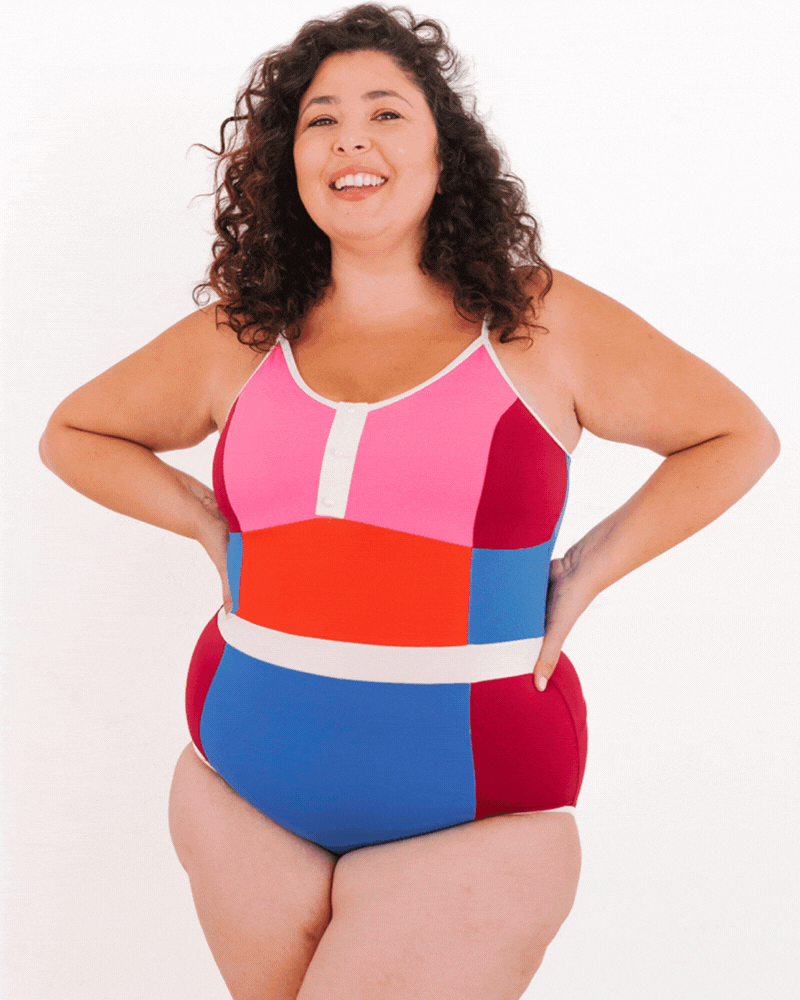Best Water Safe Nail Polish Tips for Long Lasting Manis
One of the best things about getting ready to go on vacation or hitting the beach for the weekend is to treat yourself to a manicure and pedicure. There's something about a brand new set or a fresh coat of polish that makes us feel better, even if no one else notices our cute new nail art. Plus, having a manicure or pedicure, or both is great for promoting healthy nails.
There is one slight setback, however, for both your nails and your new manicure: water. Whether that water is the lake, the salty ocean, or a chlorine-treated pool, you potentially compromise your manicure or nails each time when you swim or put your hands in the water. When our nails contact water for long periods, they absorb water and expand. When they begin to dry out, your nails will contract, and once dry, this can lead to your favorite new manicure chipping because polish can't expand or contract with the nail.
Does this mean you can't do the one thing you love most, go for a swim? Should you stay out of the water entirely? Not at all! While saltwater and chlorine affect your manicure, there are some fabulous and helpful tips to try before diving in that can help make your manicure last longer. Let's get into it!
Best Water-safe Nail Polish TipsWhat to Look for in a Professional Manicure
If you aren't DIYing your vacay nails, here are some things to look out for from your manicurist to ensure they help your nails last as long as possible.
They are skipping the water. A professional nail artist knows that water expands the nail bed. They should never soak your nails before they begin your manicure! They should also be avoiding any products that will add oils or moisturizers to your nails. Some may swipe nail polish remover over your naked nails before starting, and that's O.K. You want your nailbeds as oil and moisture-free as possible. It's usually not a pretty process, but a dry manicure is the better manicure.
They should be using a cuticle remover. Cuticle remover and cuticle oil are two different things. The cuticle, which is often mistaken for the fold of skin around the edge of the nails—can usually cover more of the nail than we realize. If your manicurist does not use a cuticle remover with a plastic or wooden pusher beforehand, there's a high chance of your polish chipping. Polish adheres best to a dry nail bed, not the dead skin cells of the cuticle. No oils or moisturizers should be used until the very end.
They should buff the nail. Not to be mistaken with roughly filing the nail. A nail buffer has a very fine grit made to help flatten ridges and prepare the nail, and buffing shouldn't hurt either.
After the cleansing, cuticle removal, and buffing, they should remove all debris from the nail without water—either using a 99% isopropyl alcohol-based cleanser or a complete nail prep solution.
Before painting naked nails, a professional should use a prep solution such as a bonder or primer to dehydrate the nail plate further, then allow everything to thoroughly dry before beginning your base coat.
No matter how long or how short your nails are, your professional nail tech should be sealing off the edge of your nails with the base coat, color, and topcoat each time. The worst chips often start at the tips of our nails, so it is essential to put a little extra attention to the edges of the nail for a long-lasting manicure.
Go for the GelIf you aren't usually a gel-polish manicure type, compared to regular polish, you might want to consider getting the gel mani before heading off to the beach or poolside. Gel polish is far more difficult to chip, lasting upwards of 2 weeks even after prolonged use of hands in water. Gel polish can withstand saltwater and harsh pool chemicals better than regular polish. While they will eventually chip and peel, a fresh set is highly unlikely to be damaged by some time spent soaking in the jacuzzi or taking a dip in the ocean.
Get Your Glitter OnIf you're doing it yourself the night before or perhaps the day of your arrival, when you have a few moments to unwind where you'll be staying, try a little glitter polish. A glitter topcoat or painting your nails with glitter is a good option, as most glitter polishes are formulated to be a little bit tougher than non-glitter polish. Plus, it's also a much more forgiving polish than, say, a matte finish and less noticeable if you accidentally chip it.
Thin layers are Better Than ThickIt can be tempting to layer the polish thicker than usual to protect your nails when you paint them. Unfortunately, too thick with the nail polish results in hampering the polish's ability to dry properly. Too much polish takes longer to dry and often results in a rough finish. Or a finish that appears dry on the surface but is easily dented as it is still wet under the surface whenever you accidentally bump your nails against something.
In addition to using thin layers when painting your nails, you should be waiting at the bare minimum of at least 2-4 minutes between each coat to allow regular polish to dry. If you don't wait, you aren't giving the solvents in your polish enough time to evaporate, which is ultimately what dries the polish to your nail.
Never Skip Base or Top CoatSometimes when we're in a hurry, we might be tempted to paint our nails and go. Don't skip out on a suitable base or topcoat. If you don't add a topcoat, your polish simply won't last very long. Think of the topcoat as a layer of armor for your manicure, protecting the color from sunlight and the water you are about to swim on.
With these best water-safe nail polish tips, you should feel free to indulge in a manicure before heading to the beach without worrying about chipping or peeling. So don't hesitate! Get splashing!





